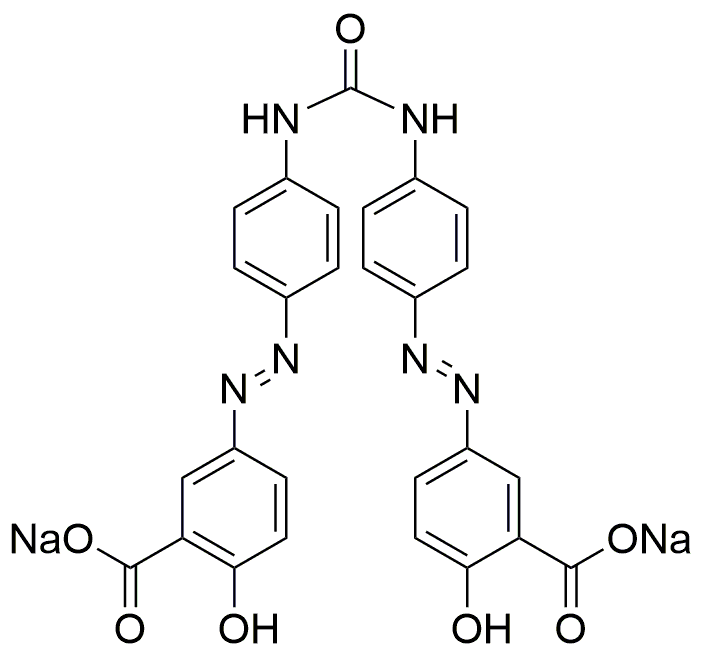Direct yellow 26 is widely utilized in research focused on:
- Dyeing Textiles: This chemical is primarily used in the textile industry for dyeing cotton and other fabrics, providing vibrant yellow hues that are both durable and colorfast.
- Food Coloring: It serves as a food dye, approved for use in various food products, enhancing visual appeal while ensuring safety and compliance with food regulations.
- Biological Staining: In laboratories, it is employed as a staining agent for microscopy, helping researchers visualize cellular structures and processes in biological samples.
- Cosmetics: The compound is also found in some cosmetic products, where it adds color to items like lipsticks and eye shadows, appealing to consumer preferences for vibrant colors.
- Research Applications: Direct yellow 26 is used in various chemical research applications, including studies on azo dyes, where its properties can be analyzed for environmental impact and degradation processes.
General Information
Properties
Safety and Regulations
Applications
Direct yellow 26 is widely utilized in research focused on:
- Dyeing Textiles: This chemical is primarily used in the textile industry for dyeing cotton and other fabrics, providing vibrant yellow hues that are both durable and colorfast.
- Food Coloring: It serves as a food dye, approved for use in various food products, enhancing visual appeal while ensuring safety and compliance with food regulations.
- Biological Staining: In laboratories, it is employed as a staining agent for microscopy, helping researchers visualize cellular structures and processes in biological samples.
- Cosmetics: The compound is also found in some cosmetic products, where it adds color to items like lipsticks and eye shadows, appealing to consumer preferences for vibrant colors.
- Research Applications: Direct yellow 26 is used in various chemical research applications, including studies on azo dyes, where its properties can be analyzed for environmental impact and degradation processes.
Documents
Safety Data Sheets (SDS)
The SDS provides comprehensive safety information on handling, storage, and disposal of the product.
Product Specification (PS)
The PS provides a comprehensive breakdown of the product’s properties, including chemical composition, physical state, purity, and storage requirements. It also details acceptable quality ranges and the product's intended applications.
Certificates of Analysis (COA)
Search for Certificates of Analysis (COA) by entering the products Lot Number. Lot and Batch Numbers can be found on a product’s label following the words ‘Lot’ or ‘Batch’.
*Catalog Number
*Lot Number
Certificates Of Origin (COO)
This COO confirms the country where the product was manufactured, and also details the materials and components used in it and whether it is derived from natural, synthetic, or other specific sources. This certificate may be required for customs, trade, and regulatory compliance.
*Catalog Number
*Lot Number
Safety Data Sheets (SDS)
The SDS provides comprehensive safety information on handling, storage, and disposal of the product.
DownloadProduct Specification (PS)
The PS provides a comprehensive breakdown of the product’s properties, including chemical composition, physical state, purity, and storage requirements. It also details acceptable quality ranges and the product's intended applications.
DownloadCertificates of Analysis (COA)
Search for Certificates of Analysis (COA) by entering the products Lot Number. Lot and Batch Numbers can be found on a product’s label following the words ‘Lot’ or ‘Batch’.
*Catalog Number
*Lot Number
Certificates Of Origin (COO)
This COO confirms the country where the product was manufactured, and also details the materials and components used in it and whether it is derived from natural, synthetic, or other specific sources. This certificate may be required for customs, trade, and regulatory compliance.


